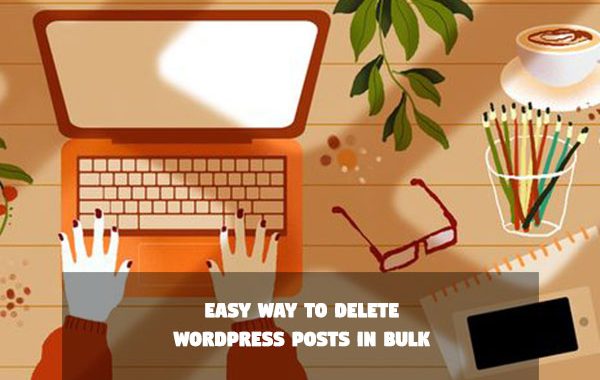As your WordPress site continues to grow, it’s likely that you’ll experience a buildup of old and possibly irrelevant pages. Of course, you could go through and delete each one by hand. However, in most cases, it will be more efficient to bulk delete them.
Taking the time to do this will give your website a fresh start, especially when you’re removing outdated posts in favor of new ones. You can then focus your efforts on crafting more relevant content – which should in turn lead to an improved SEO ranking.
In this post, we’ll explain how to delete items quickly in WordPress, by using the Bulk Delete plugin. We’ll also discuss how you can perform this task manually. Let’s get started!
How to Bulk Delete With a Plugin
Although the option to manually delete posts is available in WordPress, in most cases it’s more efficient to use a plugin. This is because plugins typically come with features to help simplify the task – such as the ability to delete posts by a specific author or category.
Plus, using a plugin will likely save you a lot of time and effort. Fortunately, there are numerous bulk delete plugins available to choose from. For the purposes of this tutorial, we’ll be using Bulk Delete.
Step 1: Install the Bulk Delete Plugin
To get things underway, you’ll first need to navigate to the Plugins section of your WordPress dashboard. This is where you can view all of your installed plugins – as well as the option to add new ones. Search for the Bulk Delete plugin, click on Install Now, and then select Activate:
Once you’ve done that, you should be able to find the Bulk Delete plugin tab in your WordPress dashboard’s sidebar. This is where you’ll access the plugin any time you want to delete your posts.
Step 2: Filter Your Posts
After opening the Bulk Delete plugin, you’ll see the following screen:
Here, you’ll find all of Bulk Delete’s filtering options for the kinds of posts you can remove. This includes, but is not limited to:
- Published posts
- Drafted posts
- Scheduled posts
- Private posts
- Pending posts
In addition, you can also further filter what will be deleted:
For example, you can set a filter based on how old each post is, or the date when it was posted. You can also set up a schedule so posts are deleted at a later date (although this feature is only available as a premium add-on).
Step 3: Go to Settings for More Advanced Filtering Options
If you require a more in-depth bulk deletion, you’ll need to scroll down a little further. That’s where you’ll find more options to select and delete posts by post tags, custom fields, and even custom taxonomies:
.
When you’re done adjusting the available options, simply click on Bulk Delete to save your changes. The plugin will then get to work deleting all the posts you’ve indicated using its filters. This will take just a few minutes, making it a much faster process than manually deleting posts.
Step 4: Access Bulk Delete’s Additional Features as Needed
Although it’s best known for its post deletion capabilities, the Bulk Delete plugin can also be used to remove comments, meta fields, pages, users, and custom fields:
Cleaning up your WordPress comments is important, as a poorly-managed section could leave visitors with a negative impression of your site. Leaving spam comments unattended can also have a negative impact on your SEO ranking.
How to Manually Bulk Delete in WordPress
Although using a plugin to delete posts is arguably a more effective route, in some instances you may decide you want to do it manually. This method will take a little longer, but it can be helpful when you’re looking to reduce the number of plugins attached to your site.
Step 1: Visit the Posts > All Posts Page
To get started, you’ll first need to navigate to the Posts tab in your WordPress dashboard. From there, select All Posts:
This is where you’ll find all of the posts on your WordPress website – including drafted posts, published posts, and private posts.
Step 2: Use the Bulk Select Option
At the top of the All Posts page, you’ll see a box next to the Title header. Checking this will automatically select all of the posts on your website. If you want to delete everything in one go, click on the Bulk Actions drop-down menu, and select Move to Trash:
.
After clicking Apply, the selected posts will be moved to the Trash section of your account. You can recover them if you change your mind, although there is a 30-day limit. After that point, the posts will be permanently deleted from your WordPress database.
Step 3: Uncheck the Posts You Want to Keep
In most cases, you’ll only want to remove certain posts. To do that, you’ll need to manually uncheck the box next to each post you intend to keep. This can be a lengthy process, depending on how many posts you have. However, it enables you to only delete posts from a specific author, in a particular category, and so on.
It’s also important to note that manual deletion via this method is capped at 20 posts. If you want to delete more than that in one go, click on the Screen Options tab in the top-right corner of the screen:
This will open a menu where you can change the Number of items per page to any number you want. When you’re happy, click the Apply button. WordPress will then display the number of posts you’ve selected, so you can bulk delete more items at once.

